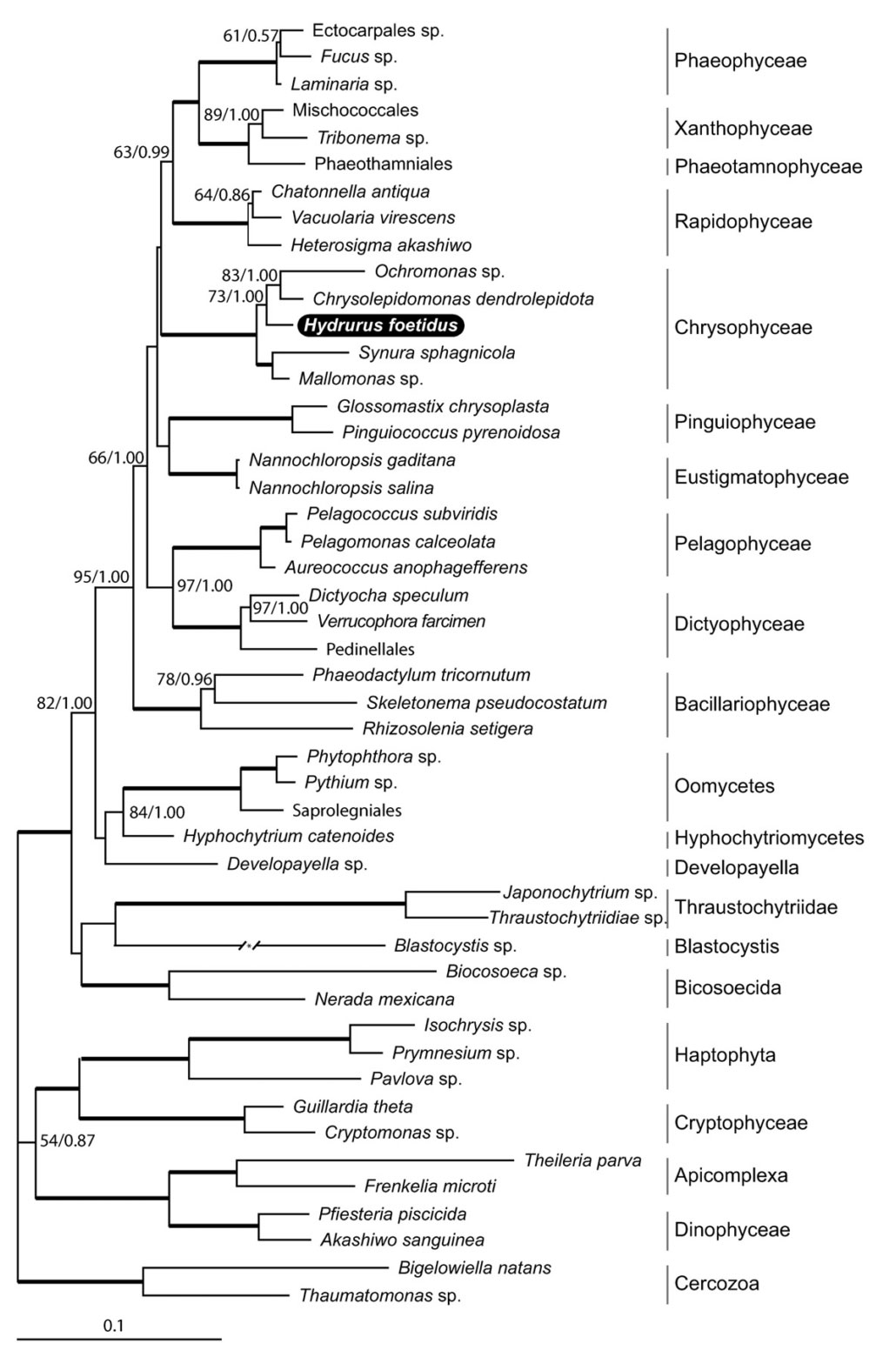The 18S and 28S rDNA identity and phylogeny of the common lotic chrysophyte Hydrurus foetidus
Klaveness, D., Bråte, J., Patil, V., Shalchian-Tabrizi, K., Kluge, R., Gislerød, H. R. and Jakobsen, K. S. 2011. European Journal of Phycology. 46(3):282-291. doi:10.1080/09670262.2011.598950


Abstract
Hydrurus foetidus is a geographically widespread alga commonly detected as 2–10 cm thalli in mountain streams in early spring, and also in lowland rivers at latitudes where seasonal conditions are appropriate for this cold-water species. Reaching macroscopic dimensions but with a pronounced phenotypic plasticity, this species is not typical for the golden algae (Chrysophyceae) – they are almost exclusively microscopic organisms, best known as micro- or nanoplankton in fresh water. Other sessile multicellular members are less conspicuous in nature, and rarely detected and sampled for further investigation. Therefore, the phylogenetic position of Hydrurus within the Chrysophyceae is not clear and has been disputed. We determined the 18S and 28S rDNA subunit sequences from a typical H. foetidus sampled at Finse, Hardangervidda mountain plateau, in south Norway. Phylogenetic trees inferred from concatenated 18S and 28S sequences, including representatives of all known groups of heterokonts, safely confirmed Hydrurus as a chrysophyte. Extending the taxon sampling to include nearly all available 18S chrysophyte sequences from cultured species and environmental DNA, our analysis placed H. foetidus within a separate, well-defined clade (here named the Hydrurus-clade) dominated by environmental sequences and poorly defined strains of chrysophytes in culture, mostly from cold environments. The environmental sequences derived from other mountainous regions showed high similarity and may represent homologous or closely related species. However, the phylogenetic relationship to the closest morphologically described chrysophyte clades remains unresolved. Genetic tools for investigating the Hydrurus complex are now available. An increased sampling of Hydrurus-like heterokont species as well as chrysophytes in general is crucial for understanding the evolution of this lineage and its relations to other chrysophyte clades.